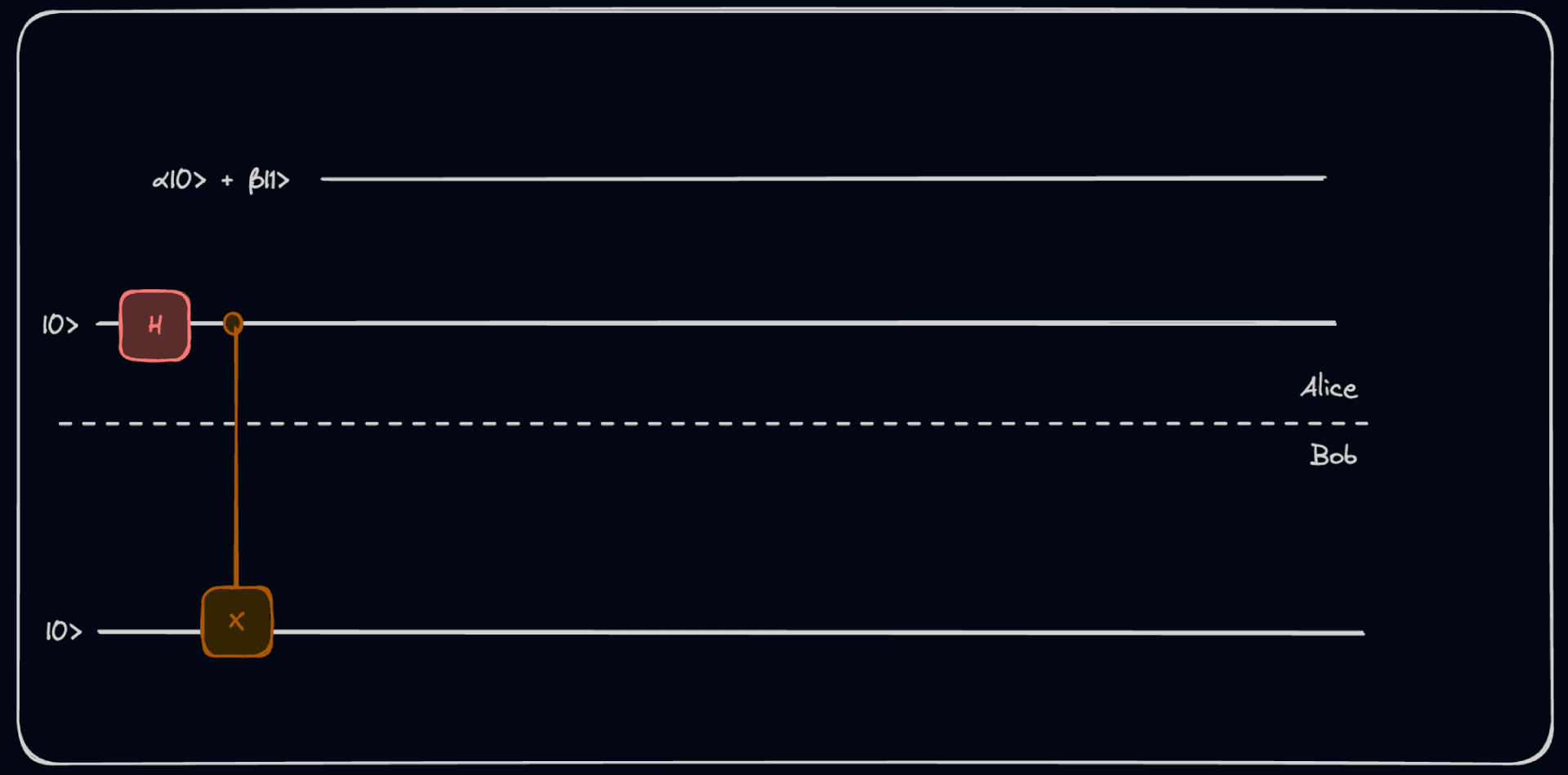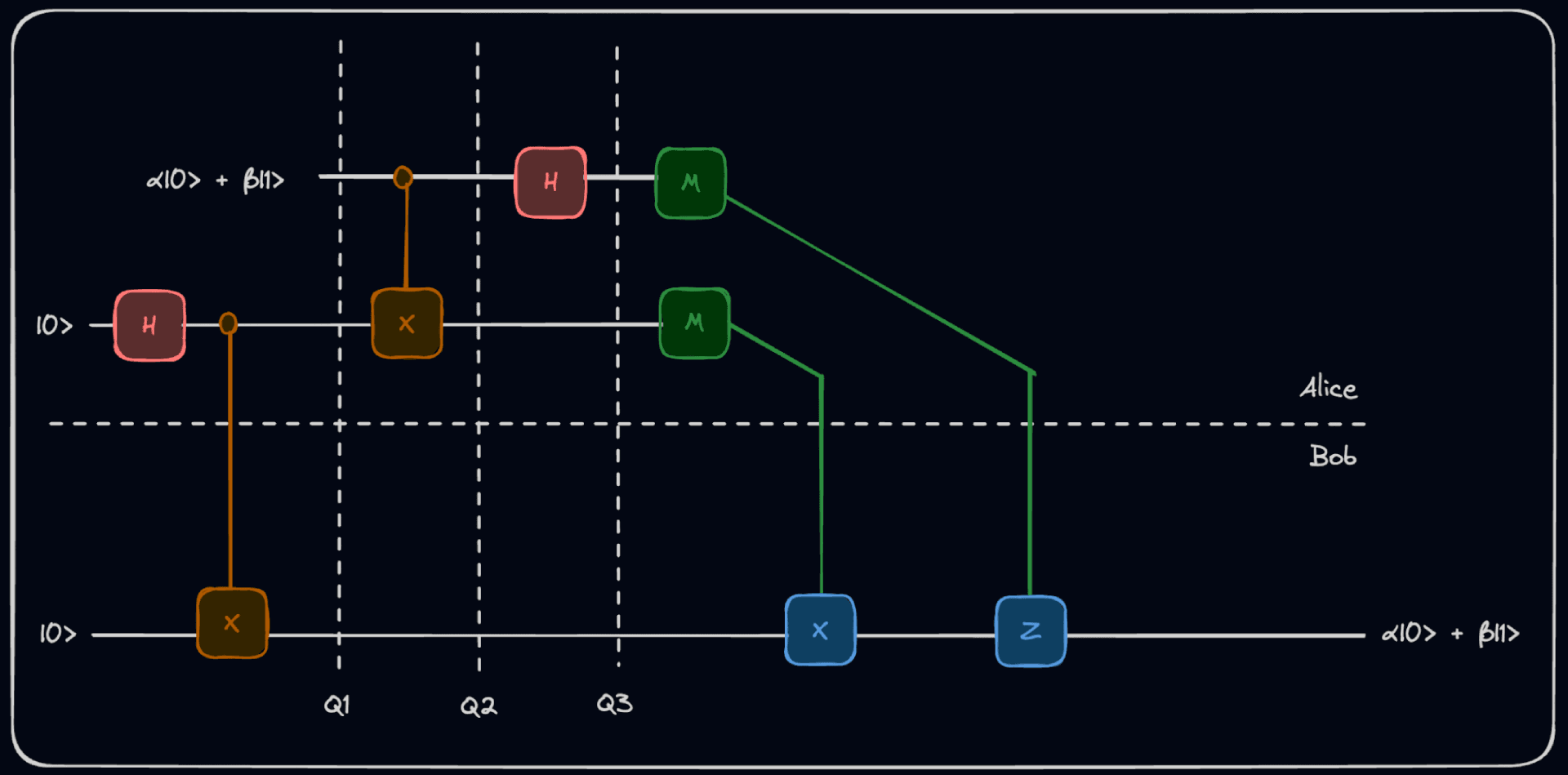- Published on
Quantum Teleportation: How It Works and Why It Matters
- Authors

- Name
- Galih Laras Prakoso
- @galihlprakoso

Teleportation has been one of my childhood dreams that I still hope will come true someday. Wouldn't it be amazing? Imagine going anywhere in the world, sending packages, or buying items online, all in the blink of an eye. Our lives would be much more exciting and faster. Just like how advancements in Information Technology have transformed the way we communicate.
1971 - Ray Tomlinson, of BBN, sent the first message across the network in 1971, initiating the use of the "@" sign to separate the names of the user and the user's machine. He sent a message from one Digital Equipment Corporation PDP-10 computer to another PDP-10. The two machines were placed next to each other. -- Wikipedia
Today, Information Technology is evolving so rapidly that we can see someone eating a burger on the other side of the world in near real-time. Teleporting information from one place to another in near real-time seemed impossible many years ago, but now, we live in that reality. We are living the dream people had many years ago.
In this blog post, I'm not going to talk about Physical Teleportation like in science fiction movies. That's still a science fiction dream. Instead, with the same excitement, I'm going to talk about "Quantum Teleportation," which is about teleporting quantum information in quantum computing.
No-Cloning Theory
In Classical Computing, teleporting information doesn’t seem like much of a problem, right? That's true, but quantum computing works a bit differently when it comes to teleporting information. We can think of teleportation as the act of moving information from one place to another without losing anything.
In Quantum Computing, there's a theorem that makes cloning states impossible, unlike in Classical Computing.
In physics, the no-cloning theorem states that it is impossible to create an independent and identical copy of an arbitrary unknown quantum state, a statement which has profound implications in the field of quantum computing among others. -- Wikipedia
The no-cloning theorem states that it is impossible to create an exact copy of an arbitrary unknown quantum state. Mathematically, there is no unitary operation that can take an arbitrary quantum state and produce two copies of it . This fundamental principle arises because copying a quantum state exactly would require measuring it, which would collapse the state due to the observer effect, thereby destroying the original quantum information.
Mathematical Proof
Let's suppose we have a unitary operator that can clone any quantum state . For any state , the operator should transform the quantum state as follows:
where is the initial state of the target. For the cloning process to work for any state, it must also clone another state :
Now, let's consider a state that is a superposition of and :
So, the operator should be able to clone the state as well:
Let's substitute the value of into the equation:
By the linearity of , we can rewrite our statement above as:
Based on our initial assumption that could clone the state, we get:
On the other hand, if the cloning process were to work on the superposition state directly, it should produce:
Expanding this product gives:
Comparing both expressions:
The left-hand side has no cross-terms (terms involving or ), while the right-hand side includes these cross-terms. Thus, the cloning process doesn't preserve the linearity required for quantum mechanics, leading to a contradiction.
Quantum Teleportation
Alright, we've established that teleporting a quantum state is impossible due to the no-cloning theorem. So, how do we teleport a quantum state while preserving its linearity?
First, check out this quantum circuit below:

Let's say Alice and Bob each have one of two entangled qubits. Alice also has an additional qubit whose state she wants to teleport to Bob. This additional qubit is initially in the state .
We can represent the combined state of the qubits in the circuit above mathematically as:
Expanding this equation, we get:
We will use the Quantum Teleportation protocol to teleport the state from Alice's qubit () to Bob's qubit. Consider this Quantum Circuit:

With this Quantum Circuit, we can see that Alice's qubit at the very top has been successfully teleported to Bob's qubit (Bob's qubit's state becomes ).
To make it easier to explain, I will split the explanation into three segments (Q1, Q2, Q3).
Q1
In this segment, we apply the gate with the qubit Alice wants to teleport as the control qubit and Alice's entangled qubit as the target qubit. Mathematically, we get:
Q2
Next, we apply the Hadamard operation to Alice's qubit that she wants to send, resulting in:
Expanding this, we get:
Using the multilinearity of the tensor product, we can write it as:
As you can see, Bob's qubit now depends on the coefficients and even though Alice hasn't sent any measurement results to Bob yet. This is the magic of entangled qubits.
Q3
The final step involves Alice measuring her qubits, which collapses their state into classical states. She then sends these results to Bob.
Bob performs operations based on Alice's classical states:
- If Alice sends
00, Bob does nothing. Bob's qubit becomes . - If Alice sends
10, Bob applies a Z gate. Bob's qubit becomes . - If Alice sends
01, Bob applies an X gate. Bob's qubit becomes . - If Alice sends
11, Bob applies both X and Z gates. Bob's qubit becomes .
We've successfully teleported Alice's qubit to Bob. Bob's qubit is now in the state , just like Alice's original qubit.
Quantum Teleportation might seem simple, but this protocol is incredibly useful for solving complex problems that require transferring qubit states from one location to another.
One important thing to note is that Alice's qubits are left in one of four states: , , , and , each with a probability magnitude of , which is:
Regardless of and , Alice no longer has a qubit in the state , which is consistent with the no-cloning theorem. This is why we call it teleportation, not cloning; the original qubit's state is lost at the source to make the Quantum Protocol work as expected.